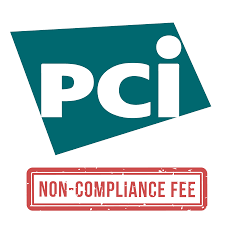Table of Contents
Don’t get scammed by your payment processor! The payment processing market is notorious for shady business practices and bait-and-switch techniques. Unethical payment processors take advantage of retailers unfamiliar with the terms and language used on statements to tack on hidden fees, charge higher rates than promised and lock merchants into one-sided contracts.
This article will highlight some of the most common tricks that payment processors use to rip off unsuspecting merchants. Hopefully this will provide some pointers to prevent you from getting ripped off.
Here are some of the top ways that payment processors rip off their customers:

Misleading low-rate quotes
Misleading quotes is quite common, particularly among processors who use the tiered pricing model for their fee structure. In this scheme, the payment processor will advertise a low rate – such as 1.50% – without fully disclosing that this only applies to “qualified” charges, typically card-present debit card or non-reward credit card transactions.
But qualified charges only represent a portion of the card transactions. There are lots of “mid-qualified” or “non-qualified” transactions, which are generally transactions with rewards cards and business cards – as well as card-not-present transactions. These mid- and non-qualified transactions are processed at a much higher processing rate – for example 2.5% – 3.0%.
Of course, the payment processor does not market these higher rates. Instead, the salesperson will highlight only the low qualified rate, making you think that the low rate will be applied to all transactions. Many retailers do not become aware of this trick until they look at their merchant statement.
Processors have some discretion on how certain types of cards will be bucketed into tiers. So the processor will have the incentive to push as many transactions into the mid- and non-qualified buckets. Unfortunately, there is no easy way to police the classification of transactions into different buckets.
Another trick is to start a merchant off at a low rate, and then gradually raise the fees over time. Many providers include language in their standard agreements giving them the right to raise processing rates at their own discretion. Contacts with these terms often experience rate hikes within the first six months of your contract.
How to avoid misleading rate quotes
The best way to avoid misleading low-rate quotes (i.e. bait-and-switch) is to avoid tiered pricing plans (i.e. plans that classify transactions into qualified, mid-, and non-qualified categories). We recommend sticking with processors that offer flat rate plans, or those that offer interchange-plus plans. Another suggestion is to ask the sale rep to put it in writing that there will be no rate increases in the first 12 to 24 months of the contract.

Bundling processing with a generic POS system
A popular strategy is for processing agents to bundle a generic point-of-sale system with the processing service. These are generally simple ‘do-it-all’ POS systems that are pushed on all sorts of businesses – from restaurants to cafes to spa businesses to specialty retail stores. The issue is that processing agents are paid to sell merchant accounts, and not to understand the specific needs of different types of retailers. In some cases, the POS system is OK for the business, but in other cases the POS system is very ill fitted for a business. Think about a feed store trying to use a POS system designed for a restaurant.
Worse, some processor-focused POS systems come with proprietary hardware that can only be used with their processing service. Or you may be locked into a hardware lease.
How to avoid a POS system that does not fit your business.
Be careful of POS systems sold by your processor. You may end up investing time and money for a POS system that only works with the salesperson’s payment processing service. If a payment processing salesperson pushes you to use their branded POS system, ask them who developed the software, who supports the software and if the POS system works with other payment processors. Make sure to do a detailed product demo to make sure that it works with your business. Look at POS system review sites.
Hidden fees and assessments
Hidden fees are very common in the processing world, particularly with the established players in the market that are looking to squeeze more revenue out of their legacy customer bases.
Hidden fees can be added in many ways.
Risk assessments – Processors may add fees for swiping credit cards. These fees are often vaguely disguised as some sort of ‘risk’ fee.
Statement fees – Processors love to charge for things like statement fees, network fees, annual fees or other management fees. These have a variety of names but are generally broken out at the end of the statement.
Deposit fees – Some processors will sneak in unnecessary fees such as deposit fees, which have no basis for being on a statement other than to increase profitability.
Extra Assessments – Shady processors may sneak in additional fees comingled with the legitimate fees and assessments of the card brands. Processors purposely name these something like ‘network assessment’ so that they appear to be legitimate assessments applied by the card brands – but they are not. These are very hard to spot unless you are familiar with the fees charged by the card brands.
Add on Unrequested ‘Opt Out’ Services – This is also very popular with the larger processors. Shady processors add ‘opt out’ fees for services that you never asked for. Unless you ‘opt out’ or tell the processor upfront that you do not want this additional service, they will go ahead and add it to the statement, hoping that you will not notice. We have seen this type of opt-in strategy used for add-on services such as data analytics, reporting and fraud protection services.
Mark-ups on certain types of transactions – Your provider may start to add on fees to certain types of transactions, such as card-not-present, international transactions or higher risk transactions. The shady processor will not tell you when these fees are added.
While all these extra fees are technically allowed based on the terms of the processor’s standard merchant agreement, your processor generally does not do a good job in informing you of these fees.
How to avoid hidden fees and assessments
Before signing a new merchant agreement, do not sign the contract without reading the fine print and exhibits. Beware of any language that provides the payment processor permission to charge additional fees without your permission.
Once you start processing, take out the proposal provided by your salesperson, and then compare it to the fees and the first few statements against the proposal. Look for changes in costs or new line items added. Checking your statement each month can be tedious, but it’s worth the time as you can save hundreds (maybe even thousands) of dollars of unnecessary per year.
We also recommend choosing a processor that is month-to-month with no termination fees. That way if your bill ends up being different than expected you can cancel the service and choose s different processor.
Unfair Equipment leases
Credit card terminals cost your payment processor btw $25 to $400, with a sweet spot in the $100-$150 range. Processors mark these up about 50% to cover the costs to deploy. Many payment processors offer terminal leasing programs for merchants that want to avoid the upfront fee.
Don’t do it!
Credit card terminal leasing is a bad deal for merchants – and payment providers that push you to lease are looking to pad profits and use the lease to lock you into their processing service.
The cost of leasing a payment terminal typically runs about $30 to $100 a month, and the lease can run two to four years. At $50 per month, that is $600 per year, which add up to $1800 over a three-year lease. This makes no economic sense to pay $1800 for a terminal that would cost you a few hundred dollars if you paid upfront. The effective interest rate on a typical terminal lease is ridiculously high.
Even worse, these leases are usually multiyear contracts that have onerous cancellation fees (or even non-cancelable). These penalties are designed to effectively lock you into a high prices processing contract. Sure, you avoid an upfront fee – but you are paying multiple times the upfront price over the terms of the lease.
How to avoid expensive equipment leases
Simple. Purchase equipment upfront. It costs more at the beginning, but your long-term savings from buying vs. leasing are material.
Other options include:
Go with the cheapest terminals initially. Although it can be tempting to purchase a slick looking terminal, if money is tight – go with the lowest price terminals. Or ask of your processor has any free terminals.
Reprogramming your current terminals. Although most processors do not want to deal with this or have security issues, today’s terminals may be able to be reprogramed. Ask your merchant service provider If they can reprogram your terminals.

PCI Fees and ‘Required’ Surveys
The fear and uncertainty around PCI requirements and PCI compliance has created a huge opportunity to stick merchants with fees labeled with official sounding named like ‘PCI Fees, Non-Compliance Fees’, or Security Fees’. The dirty little secret in the processing market is that the agency that issues PCI standards does not require any sort of testing or survey of your network. This is a scam.
Many processors use an outside service provider to manage recurring PCI assessment programs. These only surveys march merchants through a long list of questions which must be answered correctly. These surveys can be requested as often as quarterly. Miss a survey and your processor will stick you with a monthly fee of $10 to $50.
How to avoid paying unnecessary PCI fees
Chose a payment processor that does not charge PCI compliance fees. Be sure to clarify this before signing. If you see a PCI or non-compliance charge on your statement, call your processor and have them reverse the charge. This is an unnecessary charge and generates pure profits for the processor.
How can I protect myself against payment processor scams?
Here are some pointers that will help you avoid getting ripped off by a shady credit card processor:
Verify the reputation of the payment processor through a quick online search
Before you invest your time listening to payment processor’s pitch, research the payment processor’s reputation. The good news is that there are a number of free resources available, similar to our reviews of free pos systems. Here are a few links that will be helpful to check the reputation of the processor: Better Business Bureau, Nerdwallet, Merchant Maverick and US News & World Reports.
Unfortunately, many reviews on review sites are fake – particularly the positive ones. When looking at the reviews, try to see if they seem fake. Figure out what caused the reviewer to take the to post the review. Did they have a problem that the processor fixed? Was there a particular employee mentioned in the post that did a great job? If the reviews seem very vague or over the top positive, there’s a chance that the review is paid or fake.
Ask Informed Questions
Now that you are familiar with some of the shady practices, be sure to ask informed questions. Before you start, have a basic understanding of how credit card processing works so that you understand the terms used by the processor. Here are a few things you should ask about when evaluating a new credit card processing plan:
- Is this a flat rate, interchange plus or tiered pricing plan?
- Are there any minimum charges?
- What is the term and are there any cancellation fees?
- In addition to interchange, what other fees will be included each month
- When do you get your cash?
- Does the processor have the ability to add new fees or adjust terms of your agreement?
- What is the cost of the terminals and is there any ongoing charges?
Don’t be rushed into signing up
Do not fall for high pressure sales techniques, such as a deal that is only available for a limited time. This is a common technique to get you to sign without providing time to understand details and ask questions. Run away if a payment processing agent pushes you too hard to sign up. Be sure to shop around. This can be a big decision so it’s OK to take your time evaluating and comparing the terms against offers from other payment processors. And as we have mentioned several times – ask questions and read the fine print of the contract before deciding.
Check Support Hours
The processors sales rep will usually be available and responsive before you sign up. That is because they only get paid if you sign up. But what happens after you sign up?
Be sure to understand the channels of support available (phone, live chat, email, online knowledgebase). Also ask about typical wait times.
Also look into hours of support. Is support 24×7? Or is it limited to business hours or week days. Make sure that you have coverage when you need it. If you are a bar that stays open late, 24×7 support will be critical.
Also check out the processor’s website for online start up and training material. An active blog and an easy-to-understand FAQ pages usually indicated that the processor is investing in customer support.
Look for other signs of processing scams
Other signs of a potential processing scam:
- Unsolicited offers with abnormally low rates
- Unprofessional means of communication such as texting or calls with odd noises in the background
- High-pressure sales tactics to rush your decision-making process
- Requests for upfront payments
- Lack of a professional website with contact information
- Requests for sensitive financial information not asked for by other processors
What should I do if I am ripped off by a payment processor?
Any merchant suspecting they have fallen victim to a payment processor scam should immediately stop interacting with their processor and share their experience so that other retailers are not ripped off by the same scam. Online review sites are a great place to warn others retailers about the processor. If the processor’s scam is fraudulent or criminal, report the incident to your local police and notify your bank of any fraudulent transactions.


